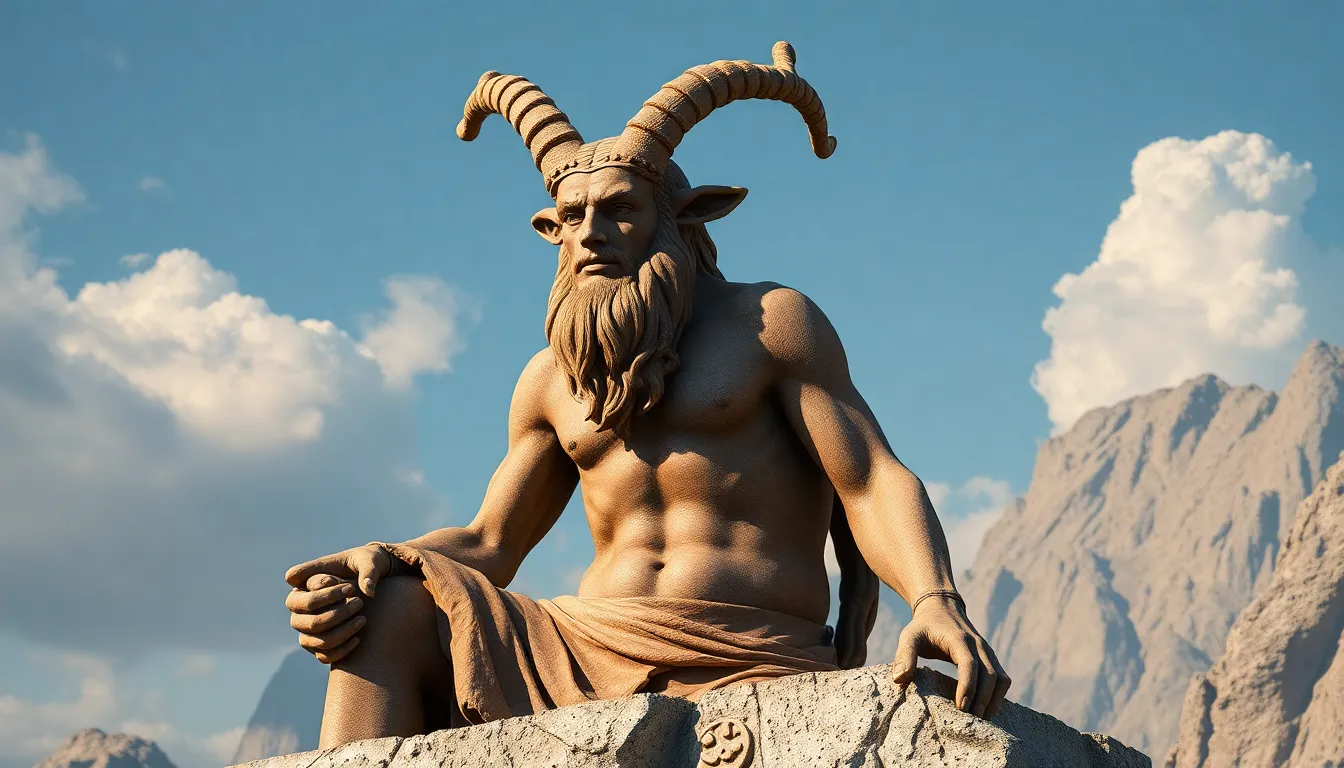The Satyr’s Role in Mythological Epics: Key Appearances and Stories
I. Introduction
In Greek mythology, Satyrs are often depicted as half-human, half-goat beings who embody the spirit of nature, revelry, and unrestrained behavior. They are commonly associated with the god Dionysus and are known for their lustful and carefree disposition. Satyrs hold a significant place in ancient cultures, representing both the joyous aspects of life and the chaotic elements of the natural world.
This article aims to explore the key appearances and narratives of Satyrs in mythology, delving into their historical context, roles in literature, and symbolic significance.
II. Historical Context of Satyrs
Satyrs originated in Greek mythology as companions of Dionysus, the god of wine and festivity. Their portrayal has evolved over time, from wild and unruly beings to more complex characters that reflect human nature.
In ancient literature, Satyrs were often depicted alongside nymphs and other woodland creatures, highlighting their connection to nature. They are distinct from Fauns, who are similar beings in Roman mythology, often portrayed with a more gentle demeanor compared to the more chaotic Satyrs.
III. Satyrs in Greek Tragedy and Comedy
Satyrs played a unique role in Greek theater, particularly in the genre of Satyr plays, which were short, comedic performances that followed tragedies. These plays provided comic relief and often featured the Satyrs engaging in absurd situations, emphasizing their connection to chaos and fertility.
- Notable works featuring Satyr characters:
- The Bacchae by Euripides: This tragedy illustrates the power of Dionysus and his Satyr followers, showcasing themes of ecstasy and madness.
- Various Satyr plays by playwrights like Aeschylus and Sophocles, which often highlighted the humorous and chaotic nature of Satyrs.
In these performances, Satyrs symbolized the primal forces of nature and the untamed aspects of human emotion, reinforcing their importance in the cultural narrative of ancient Greece.
IV. The Satyr in the Works of Hesiod and Homer
Hesiod’s works provide an early depiction of Satyrs, describing them as playful and mischievous creatures. They are often associated with rustic life and the joys of nature.
In Homer’s epics, The Iliad and The Odyssey, Satyrs are referenced as part of the natural landscape and as companions of deities. Their interactions with gods and heroes often highlight their role as mediators between the divine and human realms.
- Characteristics of Satyrs:
- Playfulness and mischief
- Connection to the wilderness
- Symbolism of chaos and nature’s bounty
V. The Satyr and Dionysian Mysteries
The connection between Satyrs and Dionysus is profound, as they often participate in the Dionysian Mysteries—rituals that celebrate fertility, rebirth, and the intoxication of the spirit. Satyrs are depicted as the embodiment of the ecstatic and uninhibited nature of these festivities.
- Representation of Satyrs in Dionysian rituals:
- As dancers and musicians, Satyrs contributed to the lively atmosphere.
- They symbolized the primal joy and madness associated with Dionysian worship.
The themes stemming from these rituals significantly influenced epic poetry, where the celebration of life and nature intertwines with darker elements of chaos and loss.
VI. Notable Satyr Characters in Mythological Epics
Several Satyr characters stand out in mythological narratives, each contributing to the understanding of Satyrs in Greek culture.
- Pan: The quintessential Satyr figure, Pan is the god of the wild, shepherds, and flocks, often portrayed with the hindquarters and legs of a goat. He is known for his musical abilities, particularly playing the pan flute, and represents the untamed spirit of nature.
- Marsyas: A tragic Satyr known for his musical contest with Apollo. Marsyas, who found the aulos (a double-reeded instrument), challenged Apollo to a contest, ultimately leading to his downfall as he was punished for his hubris.
- Other significant Satyr figures: Various lesser-known Satyrs appear in different myths, often serving as comedic relief or as symbols of untamed nature.
VII. The Satyr’s Symbolism and Themes in Mythology
The Satyr embodies several themes that resonate throughout Greek mythology. They represent the duality of human nature, where the joy of life coexists with chaos and danger.
- Themes associated with Satyrs:
- Nature and Wilderness: Satyrs are often seen as guardians of forested areas, embodying the spirit of the untamed wild.
- Excess and Instincts: Their revelry symbolizes human desires and instincts, reflecting the balance between civilization and savagery.
- Playfulness vs. Danger: While they are playful and merry, Satyrs also pose a threat to those who stray too far into the wilderness or indulge excessively.
VIII. Conclusion
In conclusion, Satyrs play a vital role in the tapestry of mythological narratives, embodying the complexities of human nature and the chaotic forces of the natural world. Their appearances in ancient literature and theater highlight their significance as symbols of revelry, fertility, and the untamed spirit.
The enduring legacy of Satyrs in literature and modern culture reflects their importance in understanding ancient mythology and the human experience. As we continue to explore these themes, the Satyr remains a powerful representation of the duality of life—where joy and chaos coexist, inviting us to embrace both the wild and the civilized aspects of our existence.




